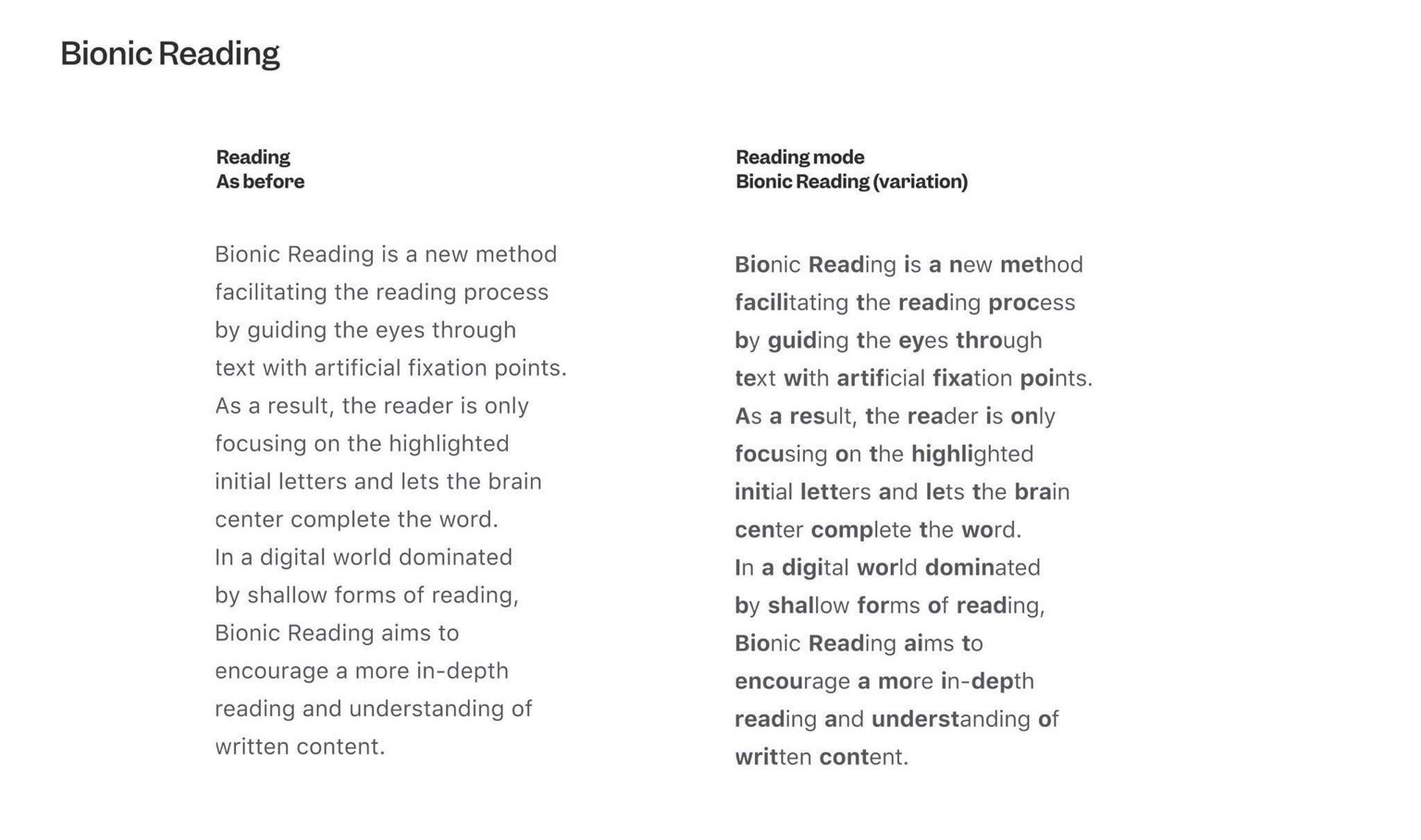bubonic-parser v0.0.2
Bubonic Parser
A reading aid for the plague times.
What
A simple parser that takes a HTML string and adds new tags to the first half of each word - while respecting the existing HTML tags. No dead links, no loss of other formatting.
Why

Recently this example of text manipulation has been circulating on social media. Many people described how much it aided their reading but the process of producing it has been patented.
Does this matter?
The social model of disability ↗ says "people are disabled by barriers in society, not by their impairment or difference." Mik Scarlet reflects this;
I'm disabled by the world around me and if the world was more accessible, I would be less disabled and then I would just be left with my "impairment" i.e. what doesn't work.
It's not that my legs don't work that disabling me. It's the fact that if I'm on a flat surface, I can wheel around fine, I'm wonderfully happy. It's only when I come up to a flight of stairs ...
The capability approach ↗ is a method of evaluating human welfare. It focuses on a persons capacity to achieve their own well-being rather than their legal right to well-being.
From these two perspectives we see that Bionic Reading can increase a persons welfare in a world that is heavily mediated by text but that the patent creates a legal barrier. It will build the capacity of some while (comparatively) disabling others.
I offer you this simple alternative so you can build tools that empower rather than commodify people.
How
npm i bubonic-parserimport { parse } from "bubonic-parser";
let paragraph = document.querySelector("p");
paragraph.innerHTML = parse(paragraph.innerHTML);The parse function takes a string as it's first argument and returns a string. You can optionally pass it a configuration object, the default looks like this.
{
// a tag name as a string
tag: "b",
// an array of classes as strings
classList: [],
// how much of the word to include inside the tag
// 0 only the first letter
// 0.5 half the word
// 1 the whole word
split: 0.5 }So to use a span you would do this.
import { parse } from "bubonic-parser";
let paragraph = document.querySelector("p");
paragraph.innerHTML = parse(paragraph.innerHTML, { tag: "span" });To add a class or two to this span you could.
import { parse } from "bubonic-parser";
let paragraph = document.querySelector("p");
paragraph.innerHTML = parse(paragraph.innerHTML, {
tag: "span",
classList: ["darken", "green"],
});No copyright intended ~ Happy Hacking.